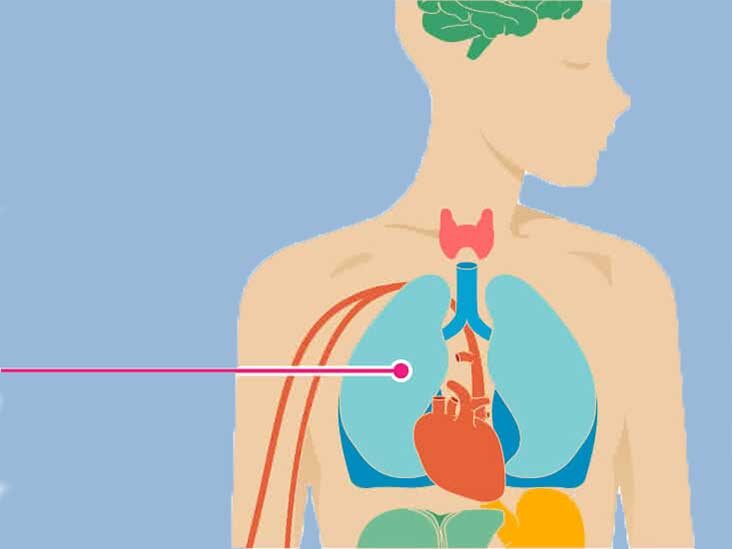
Breast cancer is a type of cancer affecting cells of the breast. It is the most common type of cancer in the US, affecting women. While it is common in women, it may also affect men.
Substantial support from different organizations helps create advances in the treatment and diagnosis of breast cancer.
Because of this support, breast cancer screening, early detection, and personalized approach to treatment, breast cancer survival rate have also increased, and the deaths numbers related to it are declining steadily.
Forms of Breast Cancer
There are different kinds of breast cancers. But they can be categorized into two major forms, including non-invasive and invasive.
Non-invasive is also referred to as breast cancer in situ. It starts in the lobules and spreads to breast tissues, which are just nearby.
On the other hand, invasive spreads from breast glands or ducts, among other parts. Invasive cancerous cells may also metastasize or spread to other body parts.
Through these two types, experts describe other common and less rare forms of breast cancer, including:
- Invasive lobular carcinoma
- Angiosarcoma
- Phyllodes tumor
- Paget disease of nipples
- Ductal carcinoma in situ
- Invasive ductal carcinoma
- Lobular carcinoma in situ
Where It Begins
Breast cancer might start from various parts of your breast. Both right and left breasts have fatty tissue, ducts, and glands.
The breast delivers and makes milk to feed infants and newborns in many women. The fatty tissue amount in the breast determines the size of every breast.
A small number of breast cancers begin in other cells of your breasts. These may include lymphomas and sarcomas. But the most common parts where breast cancer may start include nipples, ducts, stroma, lymph vessels, blood vessels, and lobules.
Causes
According to Hong Kong Cancer Fund experts, breast cancer is not an infectious or transmissible disease. Unlike several cancers, which come with infection-related causes, like cervical cancer and HPV infection, there is no known bacterial or viral infection linked to breast cancer development.
About 54% of breast cancers occur in women with no identifiable risk factors other than age and gender. While gender and age are common risk factors, certain lifestyle factors are linked to higher risks of getting the disease.
For instance, drinking alcohol can raise estrogen levels in your body. This hormone is linked to a 50% increased risk of developing breast cancer.
Unhealthy weight is also another factor causing breast cancer. Being obese is linked to more than 25% increased risks of getting the disease, especially post-menopausal women. Apart from drinking alcohol and unhealthy weight, other risk factors include:
- Dense breasts
- Smoking
- Reproductive history
- Radiation exposure history
- Family history
- Obesity
Stages of Breast Cancer
Staging usually helps to describe how much breast cancer is inside your body. The staging is usually determined by whether breast cancer has breast to other body parts and the location and size of the tumor.
Like other cancers, such as colorectal cancers, breast cancer has five stages. These include stages 0, I, II, II, III, IV.
Breast Cancer Symptoms
It might have a few symptoms, though the most noticeable one is an area of thickened breast tissue or lump. While many breast lumps don’t cause cancer, it is wise to have a doctor check them.
In addition, breast pain is not always a breast cancer symptom. You might need to observe other symptoms, including a rash around your nipples, dimpling breast skin, change in the nipple appearance, a lump, and discharge from one of your nipples, just to name a few.
Breast Tissue in Male
Until puberty, young boys have smaller breast tissues comprising several ducts situated under the areola and nipple.
After puberty, men and boys have lower levels of female hormones, and the tissue stops growing at a high rate.
Men and Breast Cancer
One out of 100 breast cancers diagnosed globally is found in men. Common types of breast cancers in men are similar to those of women, including DCIS, invasive lobular carcinoma, and invasive ductal carcinoma.
Although breast cancer is rare in men, it is slightly more likely to occur in black men. Like women, men with breast cancer can also have issues with their nipples, skin changes, lumps, and change in appearance.
Diagnosis
Diagnosing breast cancer early helps to increase the survival chances. When breast cancer gets detected early, patients can also have healthy and long lives at a late stage.
Patients can discover breast cancer through regular self-examination. During this examination is carried out, patients become conversant with their breasts and may detect abnormal changes, including changes in contour, dimpling, or swelling.
But mostly, changes detected through self-examination might not always be a sign of cancer.
You can detect growths through Hong Kong breast cancer screening before they become palpable. The screening may entail several examinations, including mammography.
Basically, mammography entails the utilization of X-rays to detect some lesions in the breast tissue. The procedure is more suitable for initial diagnosis. So you might need the following procedures to confirm the presence of breast cancer:
- Biopsy
- Ultrasound
Medication and Treatment Options
Treatment plans might depend on how aggressive your breast cancer is and what stage and kind it is. Mostly, you may treat breast cancer through surgery, accompanied by several other treatments to get rid of cancerous cells.
Surgical treatments might include lumpectomy, where a small portion of your breast is removed. If more tissues are required, your surgeon can carry out what is referred to as partial mastectomy.
This process involves the removal of both or one breast and might include the removal of armpit tissues and lymph nodes.
Along with the surgery, the doctor can also use radiation to eliminate cancerous cells that have remained within the area.
Final Say!
Breast cancer remains the leading cause of death among women. But a 5-year survival rate can be high, as long as you diagnose the disease early.
If you are not diagnosed with cancer after a thorough screening, you might want to take several steps to avoid it by maintaining a healthy lifestyle.



